|
|
Post by Geoff & Jude on Aug 17, 2020 9:48:33 GMT 10
Given the caravan and the car, I assume Mr Short wasn't a labourer working for the minimum wage! I'm not sure what the tow vehicle is, but it's a very nice machine. hi richard i reckon you're right there. the car looks to be a 1935 hudson terraplane which was a bit above the average for a car selling in those days. 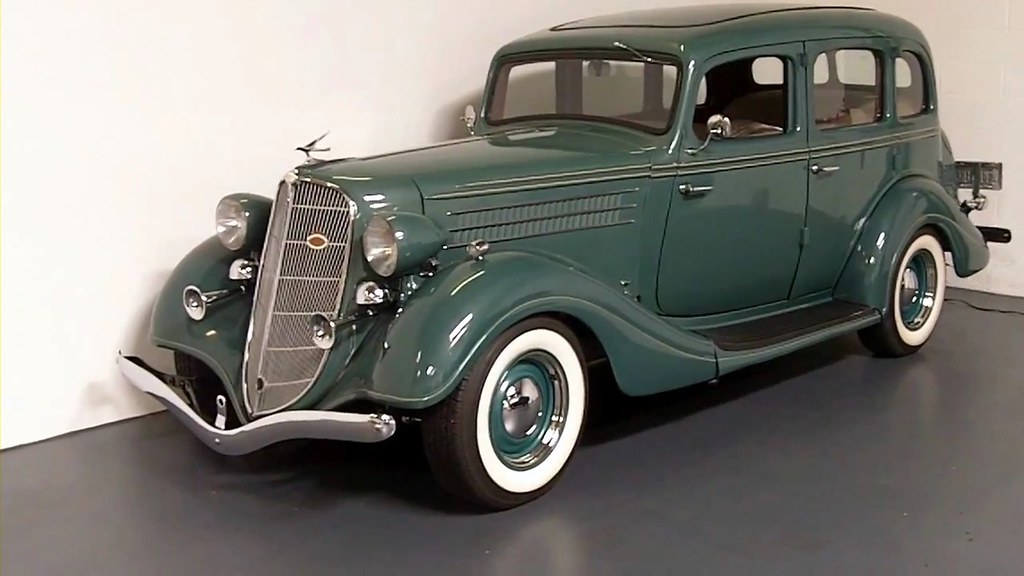 It looks like the Short's caravan has its door on the wrong side. hi ray if you look at both the photos of the hudson, you'll notice it has only one windscreen wiper, and in both photos, the wiper is on the left hand side, suggesting both cars are left hand drive. left hand drive would be fairly rare in 1939 in australia, so i reckon the photo in the paper is simply an "accidental" reverse image of a right hand drive car (and caravan), meaning the caravan door would actually be on the left side of the caravan. 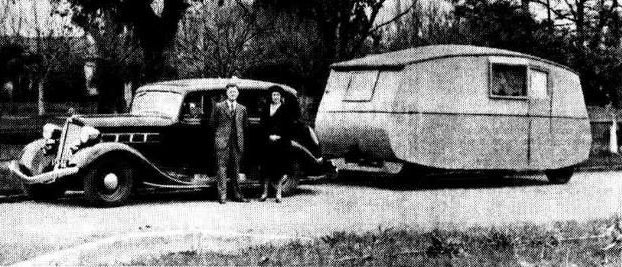 geoff 'n jude |
|
|
|
Post by Don Ricardo on Aug 17, 2020 14:11:03 GMT 10
Hi Geoff & Jude and Roehm, Geoff & Jude - What an excellent post! Two problems solved at once! Thanks for the info about the tow vehicle. Definitely looks pretty classy. I'd really love to know what sort of work Mr Short picked up along the route, not normally what you'd regard as being "on the wallaby" I suspect. Roehm - Just shows how attire has changed over the years. Looking through the photos we have of caravanners in the 30's and 40's (including on this thread), their casual clothing was definitely more formal than we are used to today. Indeed, here's a photo of my father in the late 40's. He's in his sports clothes aka casual clothing. If he was in his business attire it would have been a three-piece suit with a gold watch chain across his front. Same hat though!    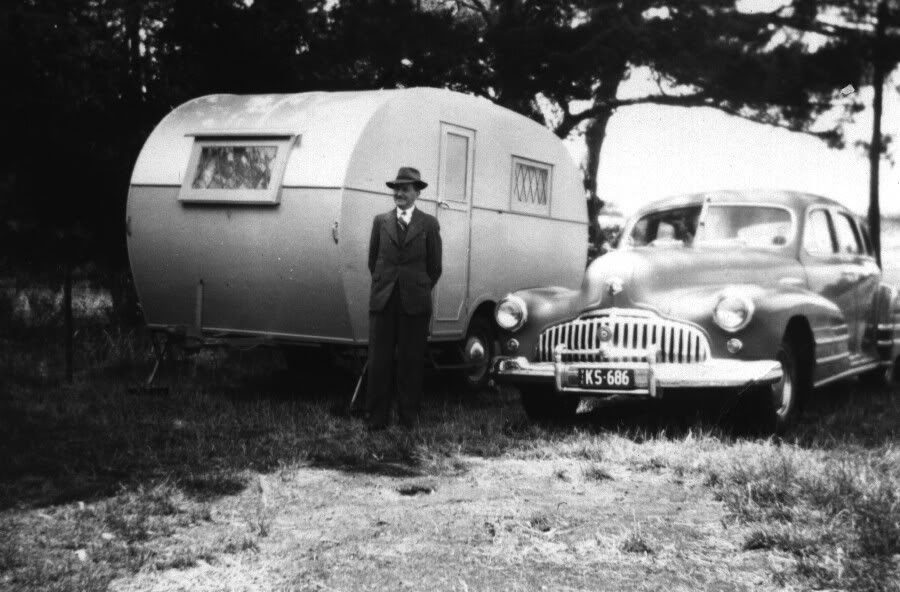 Don Ricardo |
|
|
|
Post by Don Ricardo on Aug 18, 2020 12:57:41 GMT 10
Hi all, I was interested to see the photo of the motor caravan in the article below, published in the Sydney Sun on Monday, 22 July 1935 (page 10). The caravan in question was built by Mr R S and Mrs Kemp from Melbourne and they were setting out on a journey from Melbourne to Sydney intending to travel on to Brisbane, Rockhampton, Winton, Darwin, Broome, Perth and Adelaide before heading for home. So much the same journey as many 'grey nomads' do today, but in what would have been more challenging conditions.
While we've seen quite a lot of motor caravans from the 20's and 30's, the Kemp's van differs from the norm, and that's what attracted my attention. For one thing the caravan cabin is aligned across the vehicle rather than along the vehicle, with the highest part of the roof going east-west rather than north-south. In addition to that, the caravan cabin is not integrated in any way with the car cabin. In lots of ways the vehicle looks like a coupe with a shed plonked on the back. In that sense it is perhaps more an early example of a pick-up camper (except that it can't easily be unmounted) than a motor caravan. The weight of the caravan cabin on the rear certainly looks to be having an impact on the weight distribution of the vehicle.
_Mon_22Jul1935_p10_article231281908.jpg?width=1920&height=1080&fit=bounds) (Source: National Library of Australia nla.gov.au/nla.news-article231281908The layout has been rearranged to maximise readability on the forum.)
Note the high windows which Mrs Kemp said were to afford them some privacy and stop people gawking in at them when they were camped.
It would be interesting to know if the Kemps made it all the way around Australia as they had planned.
Don Ricardo
|
|
|
|
Post by Don Ricardo on Aug 30, 2020 14:25:26 GMT 10
"Janorma" restored by Humpty2 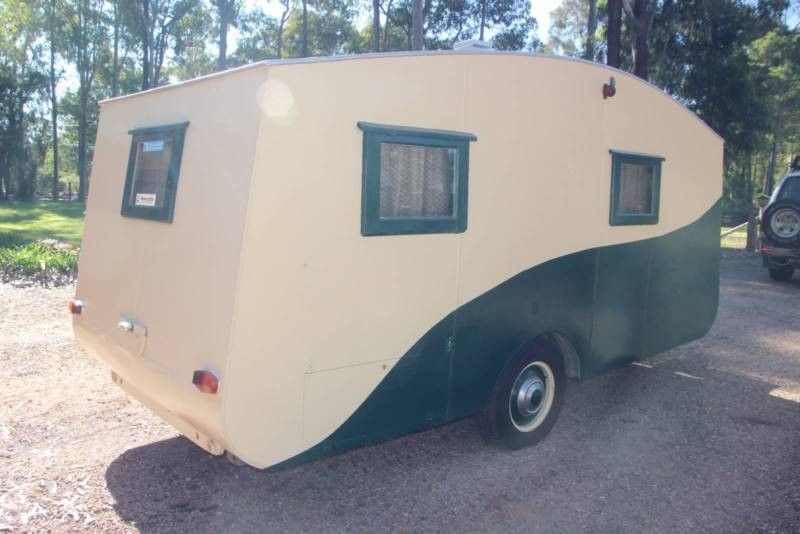  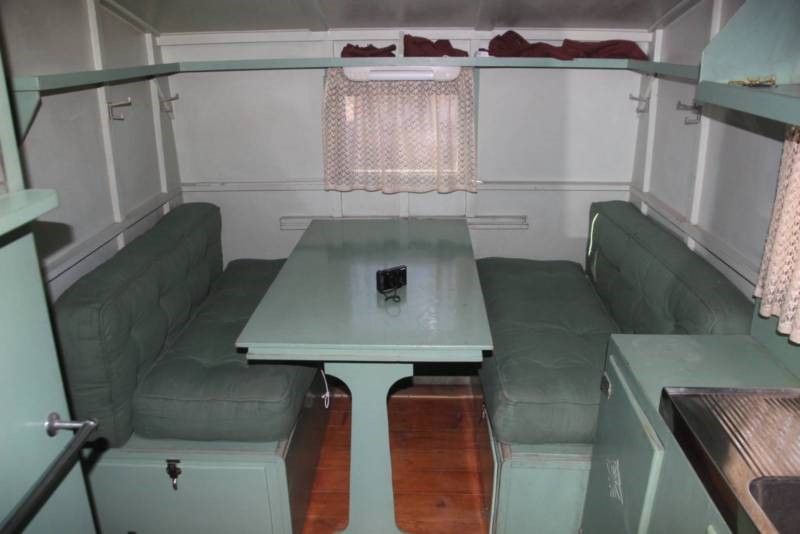 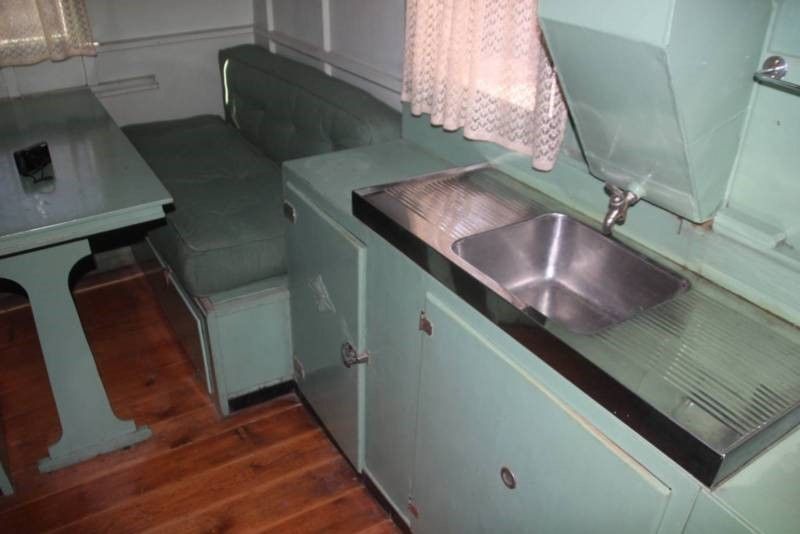   "Janorma" was rescued and restored by the Humpty2's in 2009. It was named after the two daughters of the previous owners - Jan and Norma. Because of the build quality, the Humpty2's were convinced that the van was built by a commercial manufacturer rather than being home-built, but we have not been able to establish who might have built her. Humpty2 was given photos of "Janorma" from 1949 which indicate that she was certainly built at least as early as the 40's. However, we have accumulated a lot of information about the development of caravan designs and styles since 2009, and on that basis it is clear that "Janorma" is similar to designs from the 1930's, or if she was built post-World War II, was built to a 30's design. It is for this reason that I have posted these photos on this thread. For the story of "Janorma's" restoration and lots more photos click here. Unfortunately a lot of the photos on that link have now been watermarked by Photobucket, which is why I have posted these photos which were from a Gumtree listing in September 2017. Don Ricardo
|
|
|
|
Post by Don Ricardo on Sept 24, 2021 21:47:28 GMT 10
Hi all, Kenny posted a link to the following photo here on 24 September 2021. The photo is from the State Library of Queensland collection and is captioned ‘Mobile dental clinic towing a caravan, touring southern Queensland, 1939’: 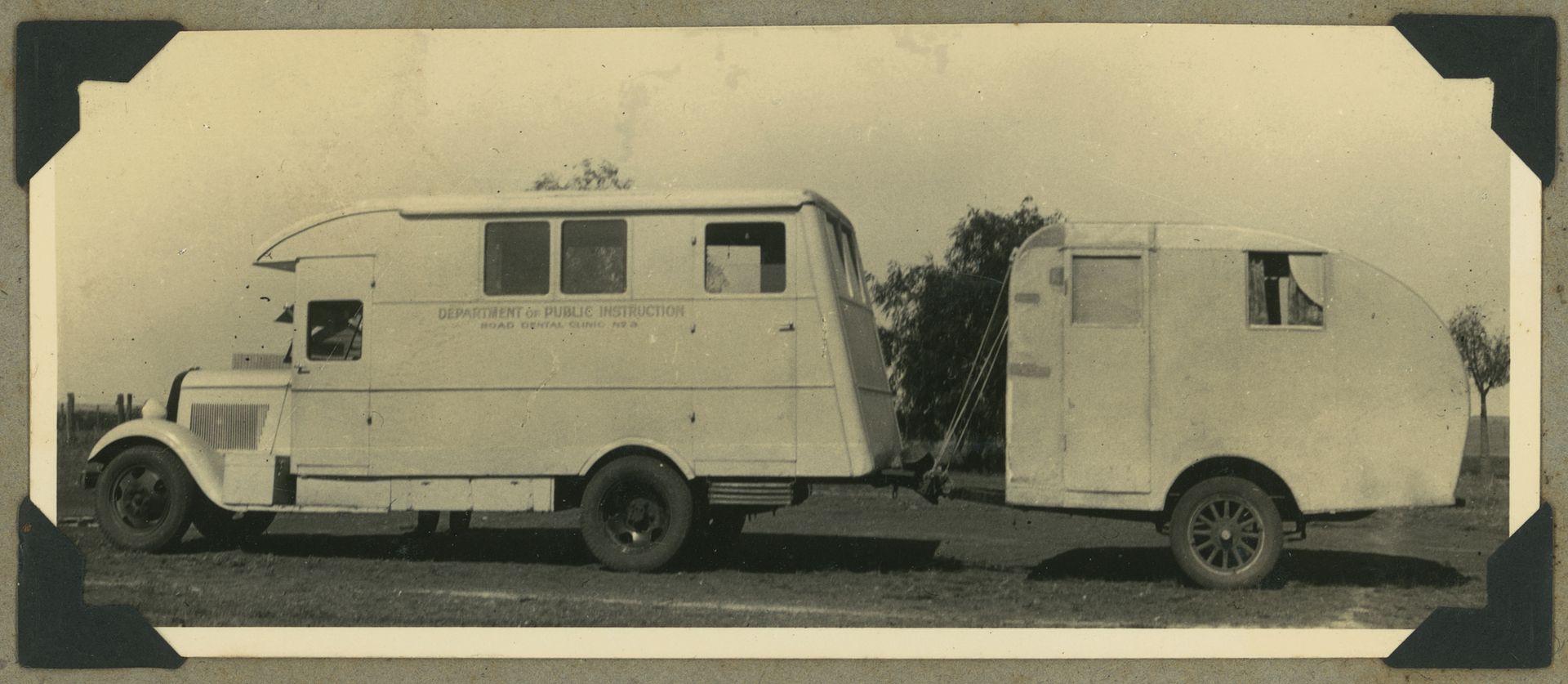 (Source: John Oxley Library, State Library of Queensland Image No: 6983-0001-0024 hdl.handle.net/10462/deriv/118201 ) I presume that the caravan provided accommodation for the traveling dentist. Don Ricardo |
|
kenny
Full Member
  
Posts: 280
|
Post by kenny on Sept 28, 2021 22:14:22 GMT 10
Check out this guy, someone had fun pulling this together in 1936! (Ack SLQ collection) Photo caption says "Streamlined caravan on an Oldsmobile chassis, Sandgate, Brisbane, 1936" Regards kenny 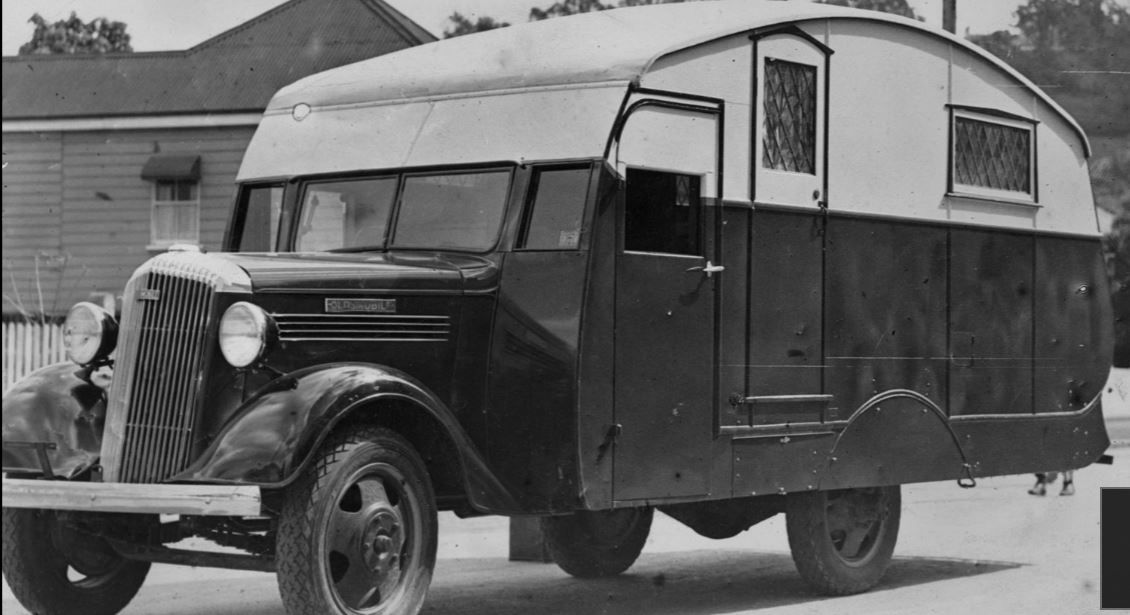 |
|
|
|
Post by Don Ricardo on Aug 8, 2022 12:50:34 GMT 10
Morning all, An interesting article about a folding caravan built by Mr H Welstead of Middle Brighton, Vic, published in The Australian Home Beautiful (Vol 12, No 1, pages 58 & 59) on 1 January 1934:
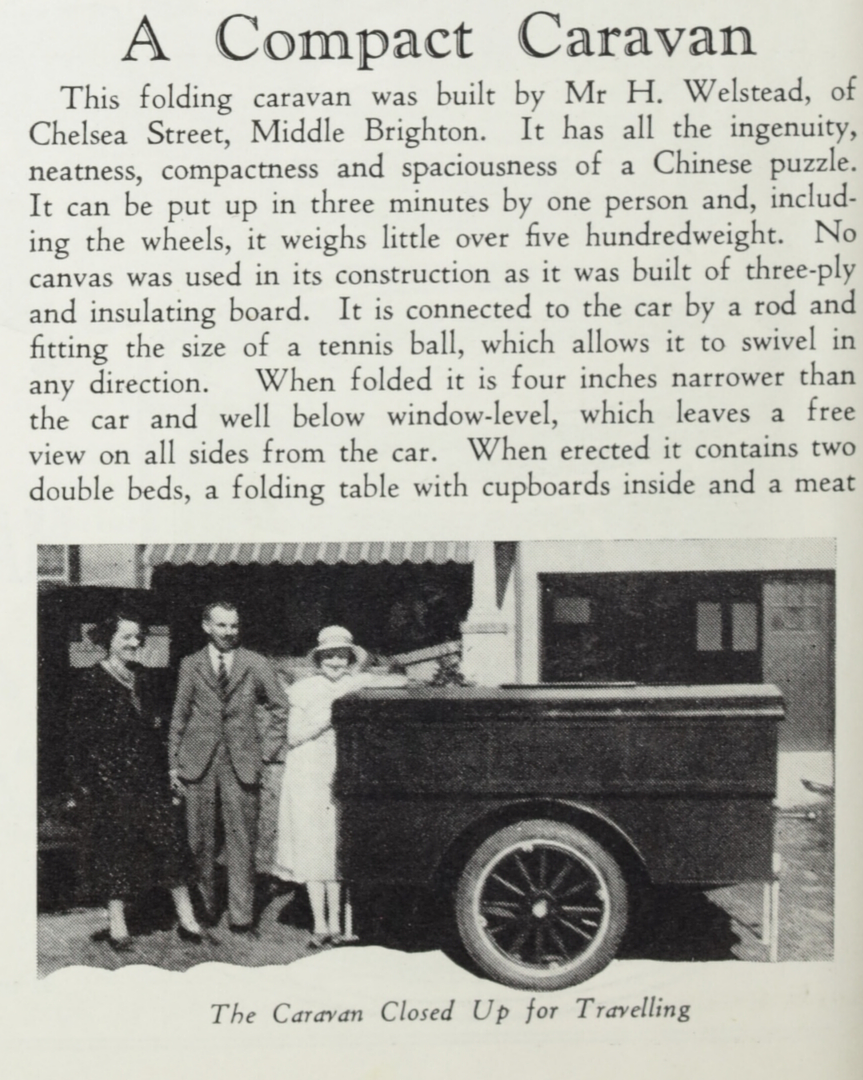 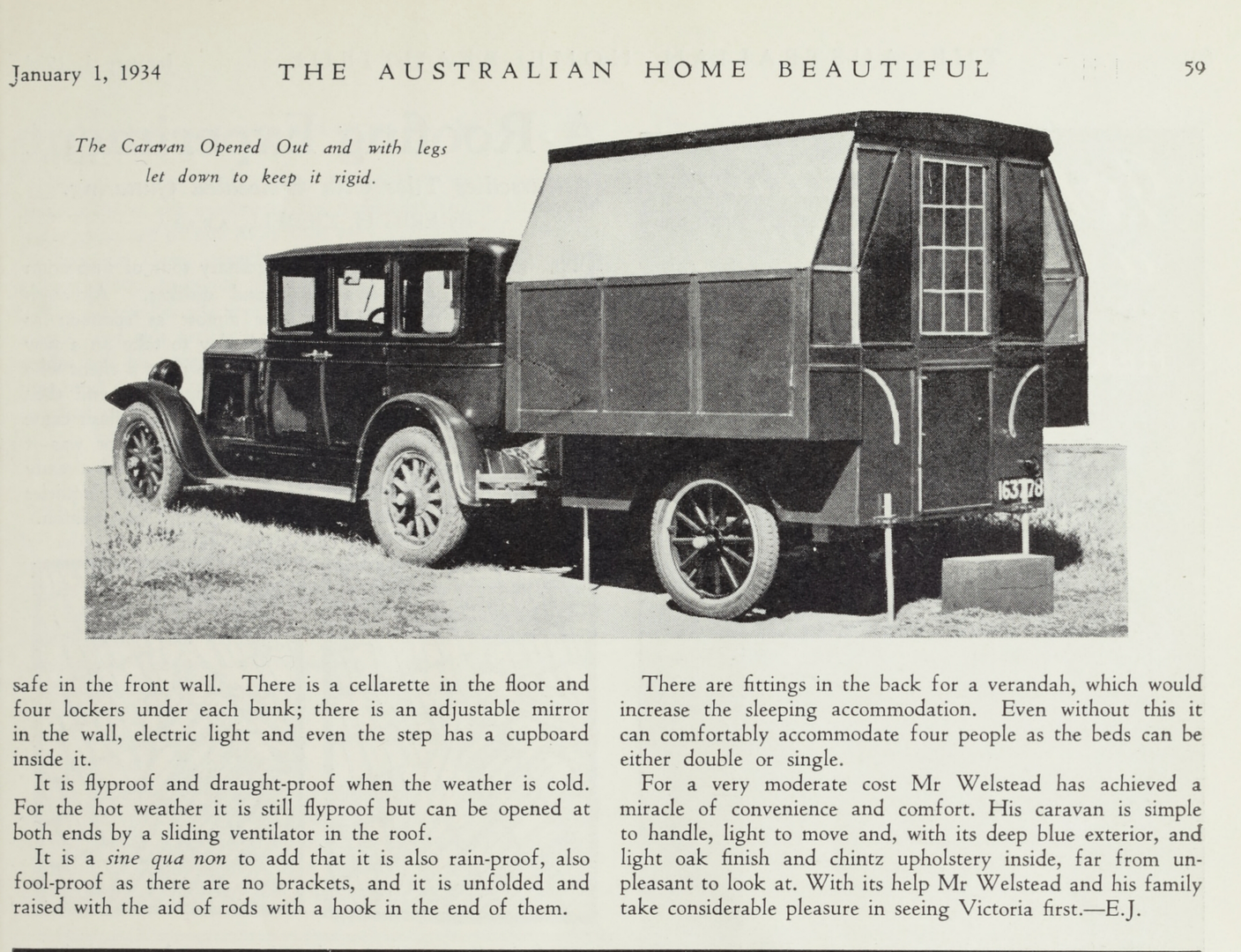 (Source: National Library of Australia - click here) In concept, Mr Welstead's folding caravan is not unlike the Brindle and Williamson Page Murphy (WPM) folding caravans being built on a commercial basis at around the same time. However, the Welstead caravan had a couple of distinctives. Perhaps of most significance was that the caravan was apparently entirely clad in three-ply and insulating board and did not use canvas sides as both the Brindle and WPM vans did. Other features included a meat safe and a 'cellarette' in the floor. It's also interesting to read the description of the coupling: "It is connected to the car by a rod and fitting the size of a tennis ball, which allows it to swivel in any direction." Note too, that the caravan could be erected in 'three minutes'.
Don Ricardo
|
|
|
|
Post by Mustang on Aug 9, 2022 7:35:14 GMT 10
Missing features from most vans especially the "Cellarette"
"Other features included a meat safe and a 'cellarette' in the floor."
|
|
|
|
Post by Don Ricardo on Sept 12, 2022 12:43:34 GMT 10
Photo of 'streamlined' caravan published in the Adelaide News on Thursday, 9 November 1933 (page 6):_Thurs_9Nov1933_p6_article128475641.png?width=1920&height=1080&fit=bounds) Steamlining was all the rage in caravan design in the 1930's, although how being 'streamlined' was defined depended on the eye of the beholder and builder. Don Ricardo
|
|
|
|
Post by Don Ricardo on Feb 9, 2023 11:58:52 GMT 10
Photo of a caravan camped at a camping reserve near Canberra, and used to illustrate an article on the 'caravan cult' in Pix magazine on 31 December 1938 (Vol 2, No 27, page 15):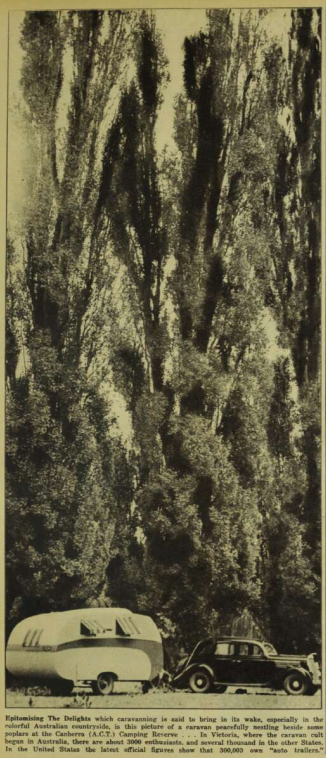 The manufacturer of the caravan is not known at this stage. But note the comment that the 'caravan cult' in Australia began in Victoria. The research posted on the Forum now indicates that the caravan movement in Australia (or at least the 'trailer caravan' movement) arguably began in South Australia.
Don Ricardo
|
|